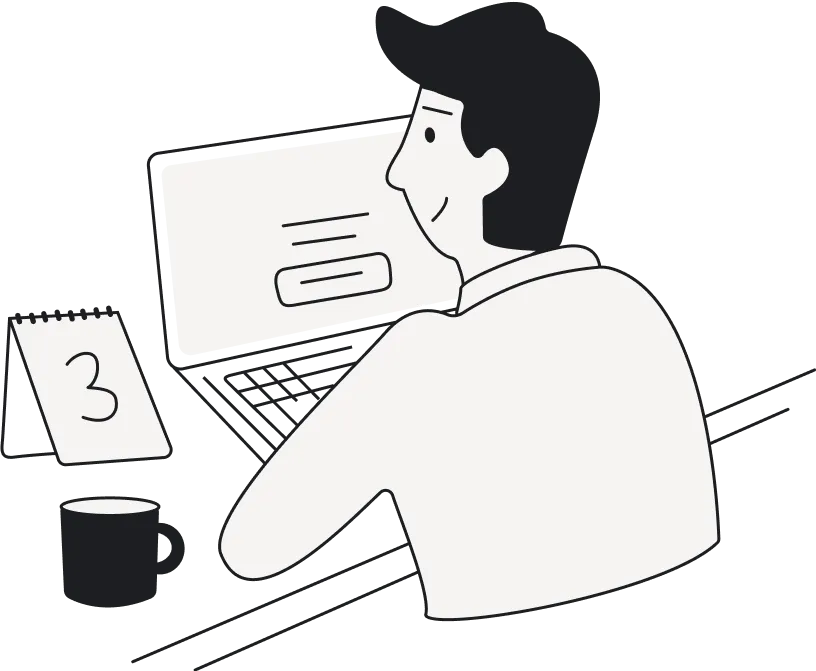
Product design is pivotal in today's dynamic and competitive business landscape. It's the driving force behind creating products that meet and exceed customer expectations. As businesses strive to innovate and provide solutions that resonate with their target audience, understanding the intricacies of product design becomes paramount. As a SaaS design agency, we know a lot about product design and are ready to share. So, let's start from the beginning.
What is product design?
Product design is the process of developing a usable product that meets customer's needs by defining the users' problems and finding creative solutions for these problems. The term is also used to refer to the result of this process, the design qualities of an existing product. Product design is based on design thinking, an approach to solving problems creatively.
We can define the following 3 characteristics to describe product design:
- Product design is a complex process that includes a variety of tasks, ranging from research to prototyping and testing.
- Product design is human-centered (as all the good things are) but involves more consideration of the needs of the business and market situation.
- Product design is never-ending (or almost so). You cannot say it is a clearly defined set of steps. Everyone follows the structure they consider the most suitable and efficient. Still, the process may include an unexpected number of iterations crucial for understanding the problem and finding the best solution.
In essence, product design encompasses both the process and the outcome. It is not merely about creating aesthetically pleasing objects but about crafting solutions that seamlessly integrate into users' lives, enhance their experiences, and ultimately add value.
Now, let's dive into details and start with the core processes at the heart of product design.
Main processes in product design
Product designers take care of the project during its whole product lifeсycle: from initial research to concept creation to prototyping and usability testing.
This section will briefly explain concepts that form the foundation of modern product design.
Product discovery
When making product decisions, we always doubt whether our solution will succeed or fail. Product discovery lowers the risks associated with the feasibility of our ideas.
Product discovery is fine-tuning your ideas by learning your customers' actual needs and problems and then deciding on the best solution.
The goal of product discovery is to quickly define whether the idea is good or bad and answer the following questions:
1. Will customers be willing to buy the product?
2. Will the product be easy to use for our customers?
3. Will engineers be able to implement our ideas?
4. Will stakeholders support our ideas?
To answer these questions, you have to examine the market and potential users carefully. Here are some design methods that help us during the product design process.
User interviews
A user interview is a quick and easy way to understand how users feel, what they think, and what they believe to create a design that satisfies their needs. It allows us to find out the customers' problems and pains and develop effective solutions to these problems.
For instance, user interviews were vital when working with Gridle. Having been on the market for several years already, the company had its loyal customers. We conducted six user interviews to understand what they expect from this product. It helped us to discover what the customers wanted to see in the new version of Gridle.

Customer journey map
Creating a customer journey map is one way to visualize the team's ideas while brainstorming.
The customer journey map displays the points between the customer and the product that needs to be designed. The map also helps to understand what emotions customers experience and what difficulties may arise during the customer journey.
Customer journey maps outline customers' steps and describe their thoughts and feelings.
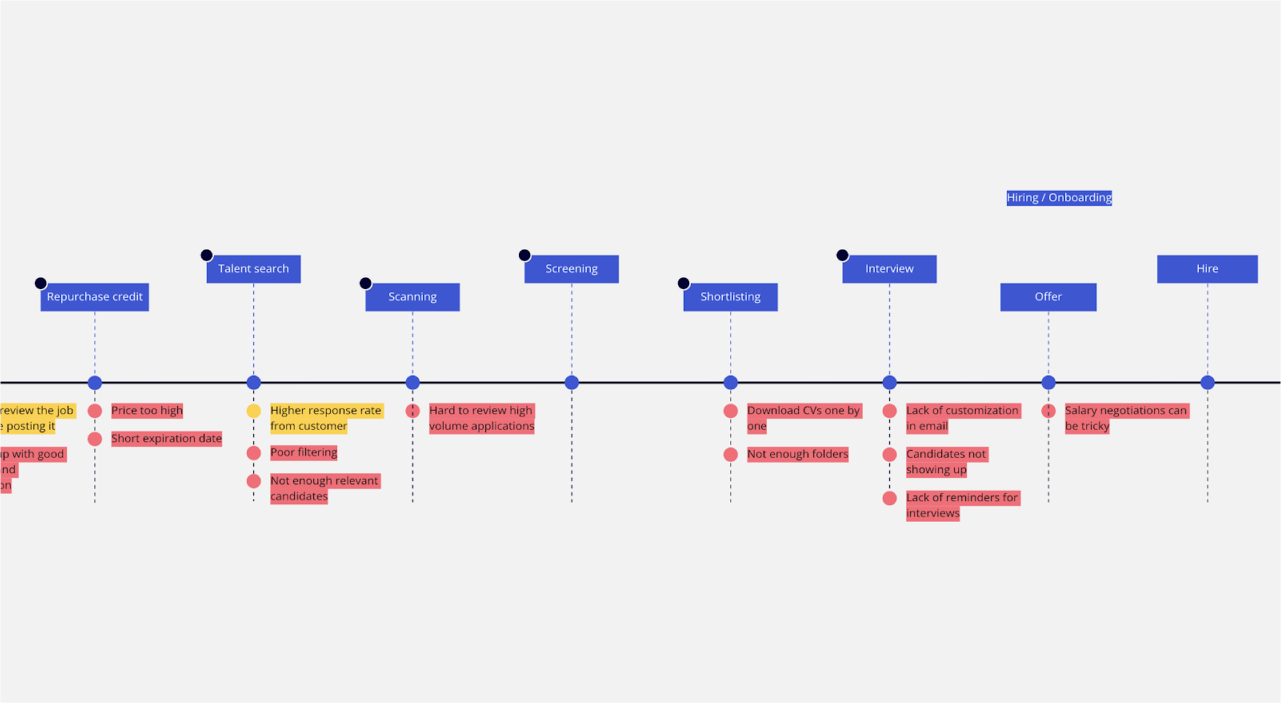
User flow
While the customer journey map aims at the user experience design of the whole process, user flow focuses on the process of using the product.
User flows are diagrams that project the possible paths the user goes through when using the product until they achieve a certain goal.
Below is an example of a user flow designed by our team for Handprinter, a unique startup with the mission of positively impacting the environment. To make Handprinter easy to use, we simplified the user flow to only three steps.

UX design
Any method through which clients recognize the value delivered by your product is referred to as user experience (UX). It covers all customer interactions and touch points with your company and product. When discussing modern products, UX generally involves various interfaces and user touchpoints (marketing campaigns, sales processes, customer support, and so on).
The role of a product designer is to consider the customer's journey as they engage with the product at each touch point and think about questions like:
- How can people discover about the product for the first time?
- What will the onboarding of a new user be like?
- How do we quickly communicate value to the customer?
- How do different user types interact with the product?
- What can we do to increase users' willingness to upgrade?
At Eleken we start mapping user experience with the help of wireframing.
Wireframes
A wireframe is a low-detail representation of a design that clearly shows:
- the main elements of each page
- their structure
- user interaction with the interface and its approximate visualization.

Prototyping
Once you have a clear vision of what the team is going to build it’s time to visualize and test all the ideas and strategic decisions with the help of prototyping.
The prototype is the basic layout of the product that visualizes all elements and functions. It allows you to visually illustrate all ideas, as well as make edits with minimal effort and cost. When making prototypes, thinking about product localization can help us see how the product will work in different countries.
Prototypes may have different forms. It can be a drawing on a piece of paper or a complicated multi-page structure created in Adobe XD, Sketch, or Figma. Still, all prototypes do the same job - they synchronize the client's and the implementor's ideas about how the design should look.
Here is a list of problems and tasks that the prototype helps to solve:
- Visualization of the idea and understanding of how the product will look in the early stages
- The ability to make changes and refine the vision at a minimum cost
- The ability to more accurately estimate the timing and budget of the whole development process
- Understanding the direction for the future development of the product.
- When creating a prototype, it's very important to validate and refine it.
As we were working on Textmagic, a customer experience platform, we needed to create a user-centric design. We were building the prototypes in Figma, and Textmagic's team showed those prototypes to users. They collected clients' feedback and analyzed them to learn how we can improve the design and develop new ideas for better problem-solution (check the case study).

When the prototypes are ready, it's time to pass them to the development team and start testing the product design.
User testing
Good product designers test their ideas with real users regularly. They conduct testing not only when a prototype or concept is finished; they make testing a part of their weekly routine so they can continually validate and tweak ideas based on the feedback they get from users.
Product designers aim to evaluate if their ideas are worthy if people want to buy the product, and if they don't - define what needs to be changed.
UI design
UI design includes composition, typography, and how the visual brand is conveyed. So, when the screen structure is tested and approved, product designers can create a visual design for your product and develop a design system to make your app scalable.
Designers conduct visual research to gather ideas for the user interface and learn the market trends to create appealing, usable, and competitive designs. Here are a few methods they can use for this purpose:
Competitor analysis
When analyzing competitors, you can find the strengths and weaknesses of their products. This will help to determine the direction of the whole product design concept and understand how to develop a better design solution.
During rival analysis, the task is to find out why competitors made certain design decisions, what they wanted to achieve, and what goals they pursued.
Moodboard

Example of a moodboard created by our team for the LittleDate mobile app.
Moodboards are a kind of preview of the future design. It helps to present and coordinate the visual components of the project:
- Illustrations
- Color schemes
- Fonts
- Slogans or headlines
- Logos
- Icons, buttons, patterns.
In general, mood boards include all the graphic materials that will communicate the concept and mood of the project.
The business value of product design

The value of good design is as obvious to some people as it is utterly unclear to others. And, as you know, the obvious things are the hardest to explain rationally. Luckily, some research brings substantial arguments for the importance of design in business value. McKinsey followed 300 companies in different countries and industries for five years to find out how design approaches correlated with financial success.
They measured the McKinsey Design Index (MDI), which reflects the strength of design in companies. The graphs presented in the research demonstrate that companies with higher MDI have twice as high a percentage of annual growth compared to the average.
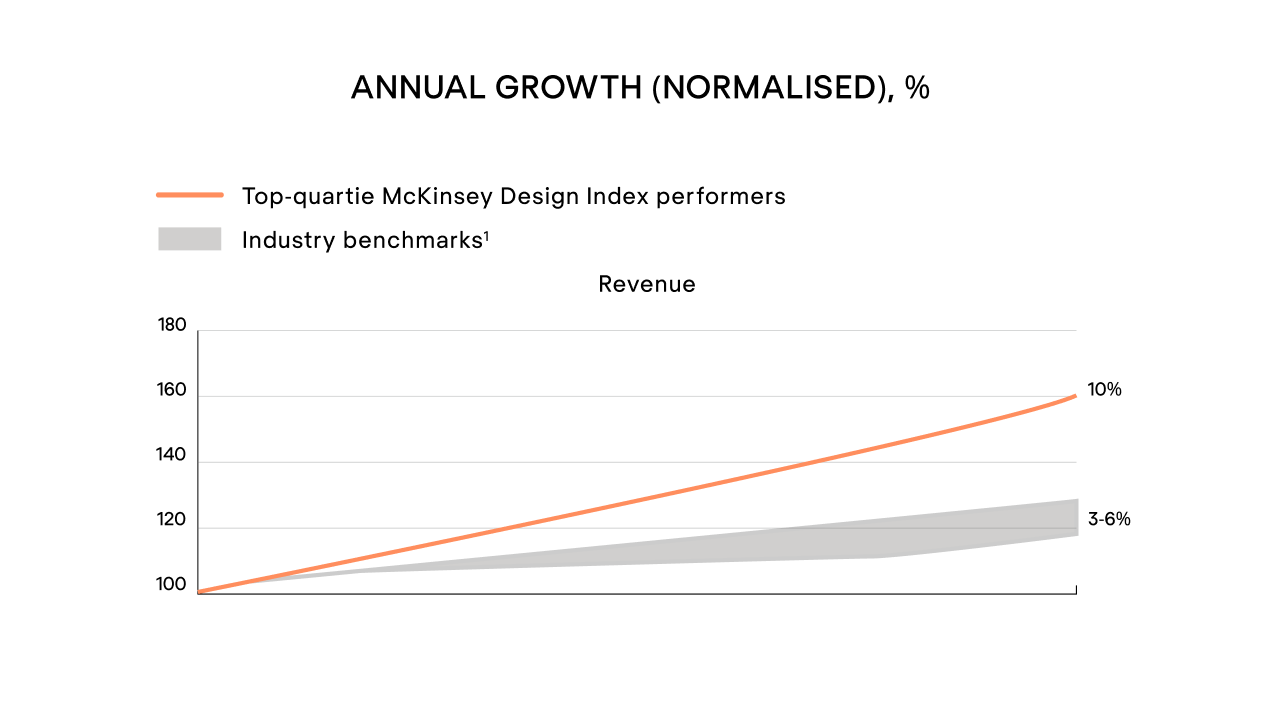
The same research shows that the companies that truly stand out tend to have better financial performance than the competitors. If design helps big established companies stand out, it is even more important for emerging businesses that have to thrive to attract and retain users.
Best product design examples
- Apple. Apple is definitely one of the world's most design-conscious companies. Their design team is involved in every stage of the product development process, from the first concept to the finished product. As a result, everything, from their website to the latest iPhone model, looks clean and simple and is desired by everyone.

- Airbnb. A product that changed the whole tourism industry by connecting short-time renters with their clients directly.

- Stripe. The valuable product and a human-centered approach to design make this company stand out and leave all the competitors behind. Sometimes, it seems to us that all startups want their apps/websites design to look like like Stripe.

So, basically, most popular products that are simple but genius, easy to use, and, consequently, have success on the market are built by companies that understand the importance of design talent. So, if you're developing user-centered products, having a skilled product designer on your team is crucial.
How to build a killer product design team
A good design team is what helps you create an effective and valuable product from the users' point of view.
Here are several tips on how to build a product design team:
Hire generalists
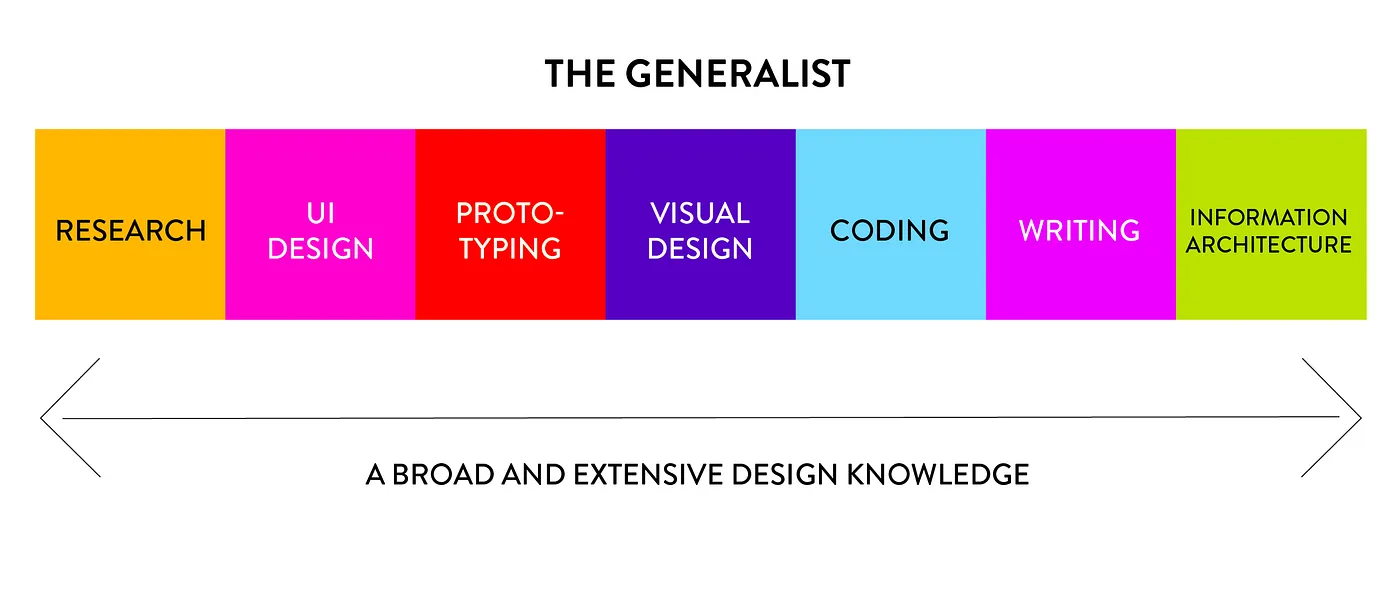
What your design team can't go without is UX and UI design. A generalist is a person who is skilled in a variety of talents that apply to both positions. Having a generalist on your team gives you someone who isn't scared to take charge of the entire design process, from building user flows to creating high-fidelity prototypes.
Product designers at Eleken, for example, are generalists. They are all dedicated to their specific projects and responsible for user experience, visual design, UX research, and everything needed to create high-quality design solutions.
Think out the right team structure
To work productively your team members should clearly know whom to report to, whom to ask for advice, and the like. Building a clear product team structure brings transparency to your company and makes the team work more efficiently. As there are many ways to organize the team, you should analyze your business goals, resources, and product to make the right choice.
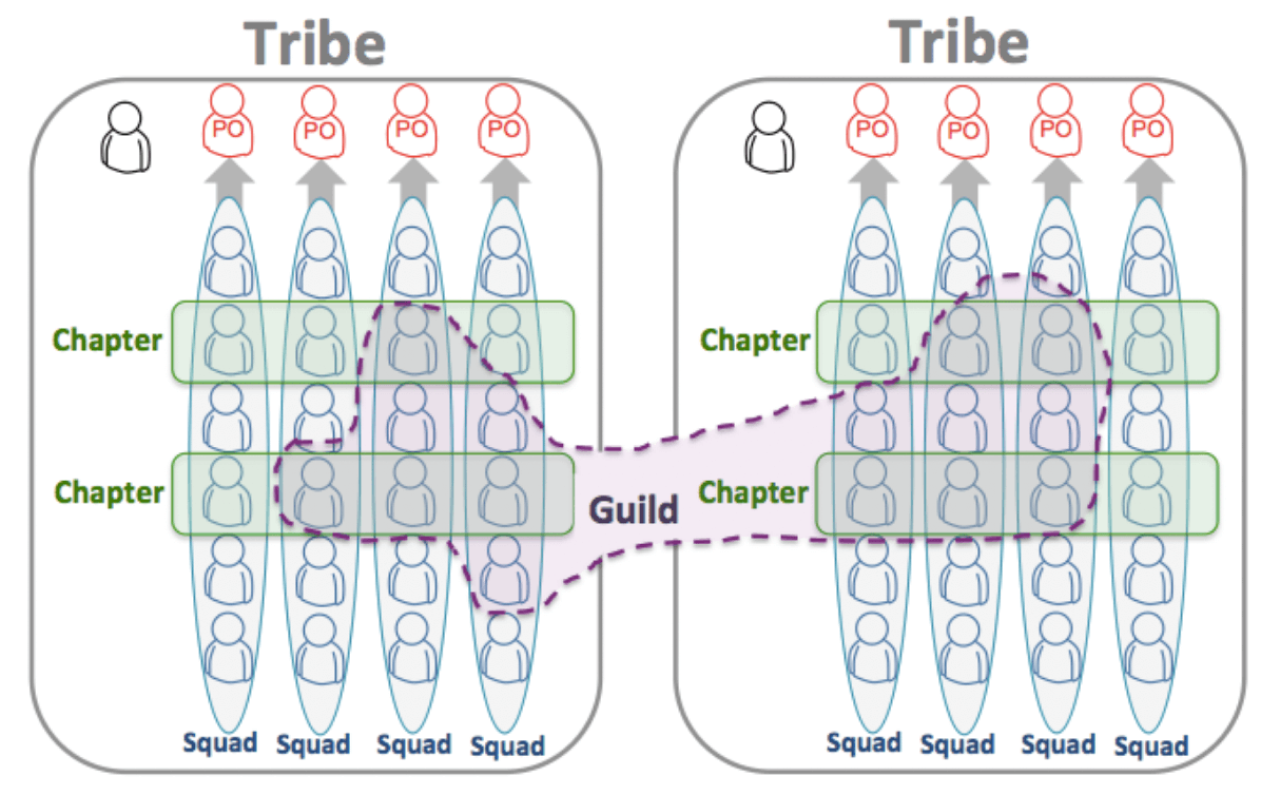
Define a clear product design process
Designers will be able to deliver the final solution faster if they follow a well-organized design process. It eliminates misconceptions or miscommunications among the team members or upper management.
Following a well-established design process makes it clear for a team what they should do, when to do it, and what they should get as the result. Therefore, at Eleken, we have a defined product design process for different types of services. Here’s what our process looks like for an MVP design.

To sum up
Product design stands as a cornerstone in the realm of business innovation and customer satisfaction. As we navigate through the intricacies of this dynamic field, several key takeaways are:
- Product design is a holistic process that goes beyond aesthetics and involves a comprehensive approach that encompasses understanding user needs, problem-solving, and creative thinking.
- A successful product design is rooted in a deep understanding of your target audience. User interviews, customer journey mapping, and user testing are vital tools in achieving this understanding. Being customer-centric is paramount.
- Incorporating design thinking principles into your product design process can lead to more effective problem-solving and innovative solutions.
- Research shows that companies prioritizing design tend to outperform their competitors and experience higher financial growth.
- To harness the benefits of product design, it's crucial to assemble a skilled and versatile design team, capable of covering UX, UI, research, and prototyping.
It's not simple to build a great design team, and it's not something that can be done in a couple of weeks. So, if you don't have the time to hire and educate in-house employees, and you’re not sure if an outsourcing vendor has the needed experience in your field, we can assist you with hiring a dedicated product designer focused solely on your project.
Eleken’s designers are all professionals with experience of working with SaaS solutions. They may collaborate closely with your team and help you develop a product from scratch, make a revamp or assist in expanding your product.
Hire our top design talent for ongoing projects!



















